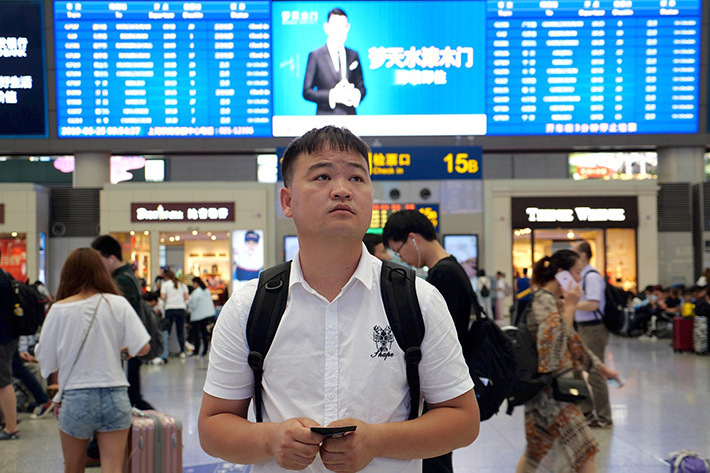China's high-speed rail network is the largest in the world and it’s nowhere near finished. Millions of people travel across the country by train each day. This growing market is developing in ever more new and remarkable ways.
The annual number of rail journeys doubled to 3 billion from 2007 to 2017. Many Chinese people frequently travel by train on business, however, for some Chinese family visits for special occasions such as Chinese New Year are still more of a rare occurrence. Lihai Zhao is one of them. The civil engineer and family man lives in Shanghai (China). He travels on business at least once a week, usually taking the high-speed train in order to visit business partners or other company branches. Lihai’s son Bo and his wife Li Jiayue still live in the country with the grandparents around 2,500 km away in the Southeast of China. Since he moved to Shanghai for a new job, he only has little time to see his family. Many Chinese families leave their home region to work in the metropolitan areas of the country far away from their families who often stay in the countryside. Quick and comfortable transportation therefore becomes more and more important.
The annual number of rail journeys doubled to 3 billion from 2007 to 2017. In a study conducted by banking giant HSBC, passenger numbers are predicted to rise to 5.5 billion in 2022. According to a report by the state-owned China Railway Corporation (CRC), the highest number of train journeys in the People’s Republic of China in any one day was recorded in 2019. This was one of the days huge numbers of people were returning to work after the New Year celebrations. So, on 23 February 2019, nearly 13.2 million people travelled across the country by train. In response to the growing air and rail passenger figures, the government is expanding the country’s transport infrastructure at what appears to be a staggering rate. This strategy includes motorways, airports and railways. In view of the high levels of traffic congestion and air pollution, the focus is increasingly shifting towards environmentally friendly transport solutions, such as high-speed trains. According to China’s Ministry of Transport around 103 billion euro is expected to be invested in new rail infrastructure.
Liebherr is part of this development: air-conditioning systems for rolling stock, electro-hydraulic actuators and tilting technology, which enables trains to achieve higher speeds. Liebherr engineers are already working on projects for the next generation of Chinese high-speed trains. Advances in mobility technology have significantly shortened the huge distances in one of the largest countries in the world. This helps to make the lives of people like Zhao Lihai so much easier.
Read the story here

